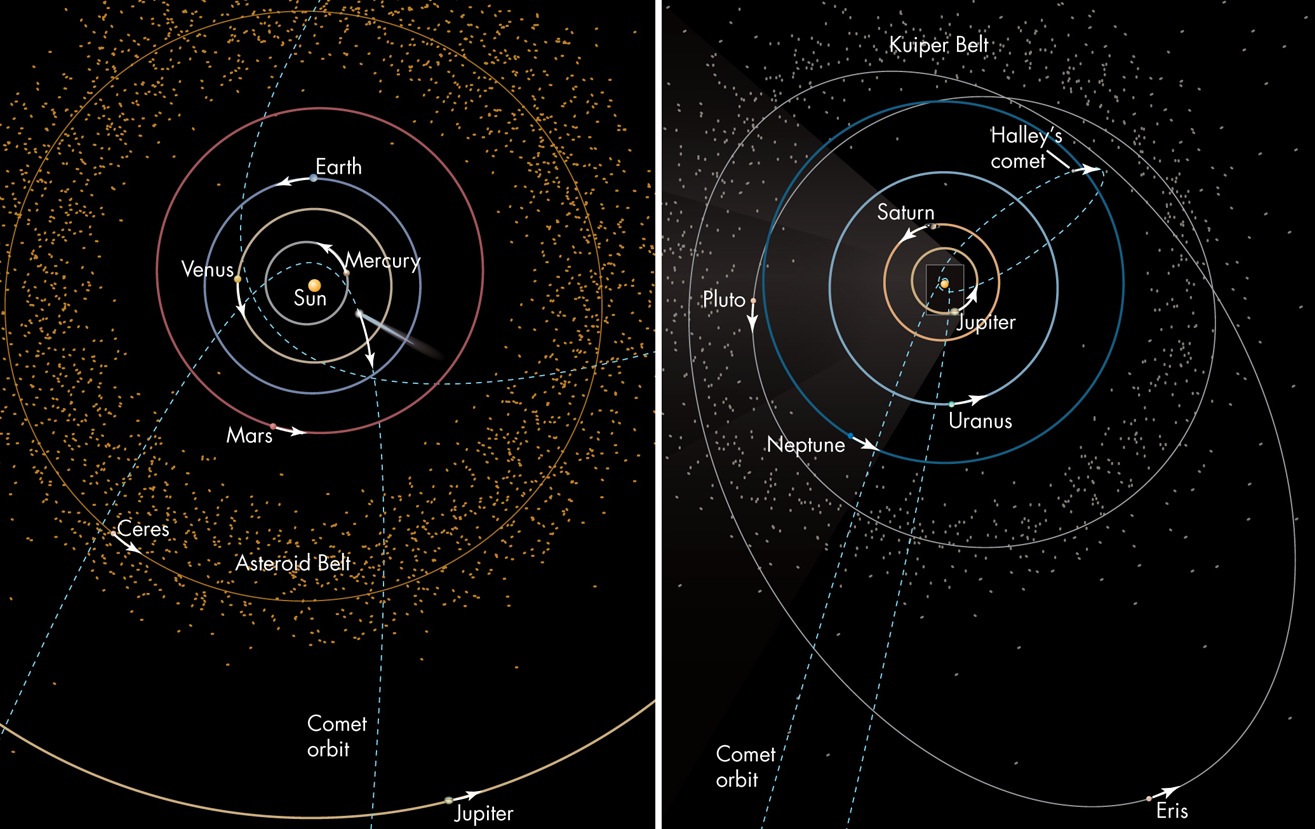[The sun and its 8 planets.]
The inner planets
Mercury, Venus, Earth, Mars (terrestrial planets)
The outer planets
Jupiter, Saturn, Uranus, Neptune (Jovian planets)
[Distances of planets from the sun. The inner (upper row) and outer planets are shown in two different scales.]
[Orbital information of the planets.]
- Differences between inner and outer planets:
size, mass, average density, composition
[Some basic properties of the planets.]
- Common things:
revolution -- all orbits are roughly in the same plane, all revolve in the same sense
rotation -- the Sun rotates with its equator inclined 7.25 degrees to the Earth orbit. Others are less than 30 degrees, except for Venus and Uranus, which rotate 'backwards'or nearly 'perpendicularly'.
- The 7 giant satellites
[These are the 7 satellites larger than 2700 km.]
[Asteroid Gaspra, picture taken by Galileo spacecraft on its way to Jupiter, on Oct. 29, 1991. Its size is about 19x12x11 km. Color variation is exaggerated.]
[Asteroid Ida and its satellite Dactyl, picture taken by Galileo on Aug. 28, 1993. Ida is about 52 km long, and Dactyl only 1.6 km. Dactyl orbits Ida at a distance about 100 km. Color variation is exaggerated.]
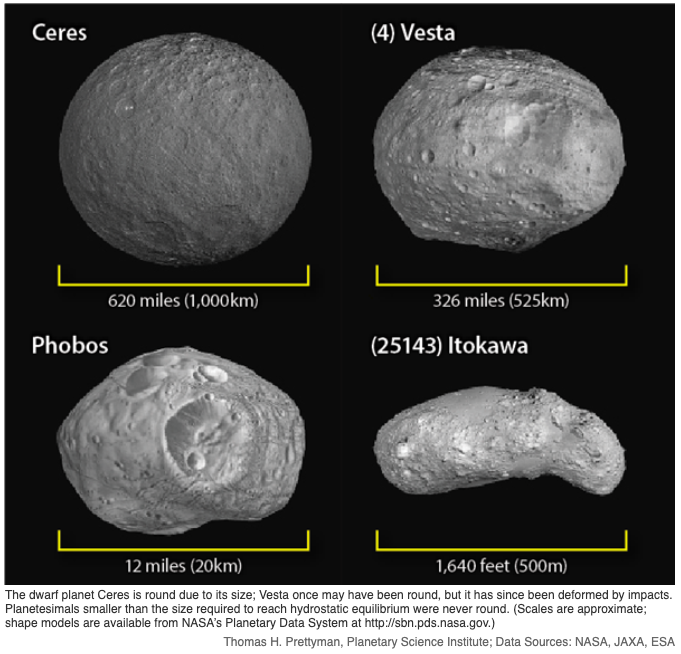
Asteroids can be divided into Near Earth Asteroids (NEAs, or NEOs), Main Belt Asteroids (MBAs), Trojans, and Centaurs.
(Check the IAU Minor Planet Center for more details.)
[Comet Hale-Bopp on March 8, 1997. The ion tail stretches for 12 degrees.]
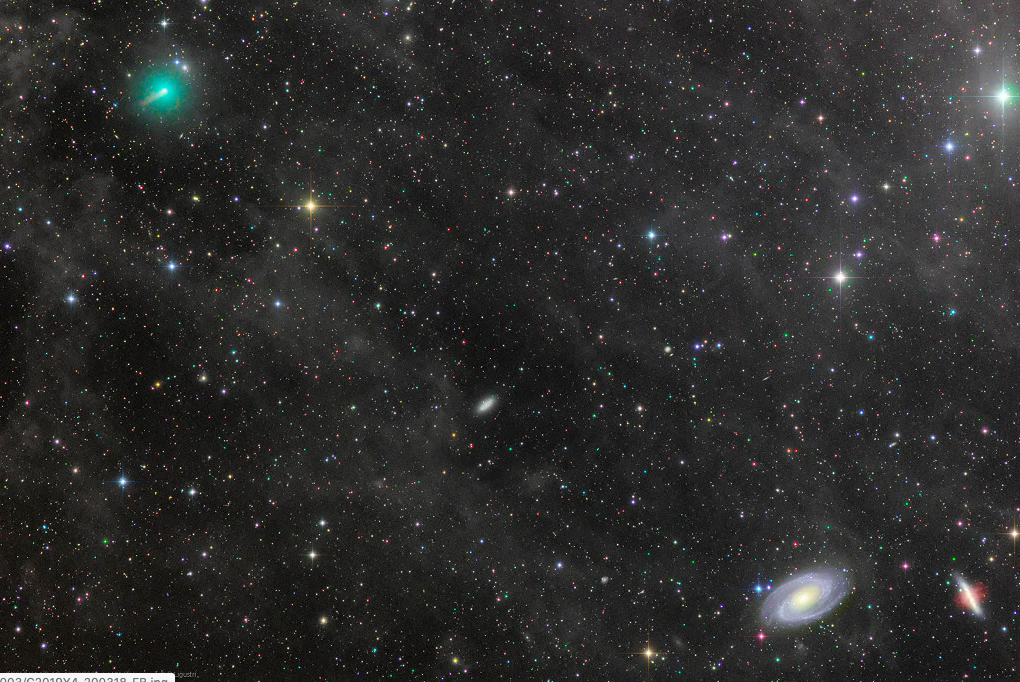
[Comet Atlas in March 2020 (roughly magnitude 8), 5 degrees away from M81 and M82. Credit: R. Ligustri/CARA/CAST.]
[Kuiper Belt (30AU ~ 100AU) and Oort Cloud (1000AU ~ 50000AU).
Motivation of the proposal: origins of comets.]
The story from 1992 to 2006 ... Pluto as a planet from 1930 to 2006.
[Astronomers voted for the definition of a planet.]

[Oort Cloud and Kuiper Belt in the solar system. The Kuiper belt is sometimes called the Edgeworth-Kuiper belt, and therefore Kuiper Belt Objects (KBOs) or Edgeworth-Kuiper Belt Objects (EKBOs). Another term widely used is Trans-Neptunian Objects (TNOs), which may also include Oort Cloud Objects (OCOs).]
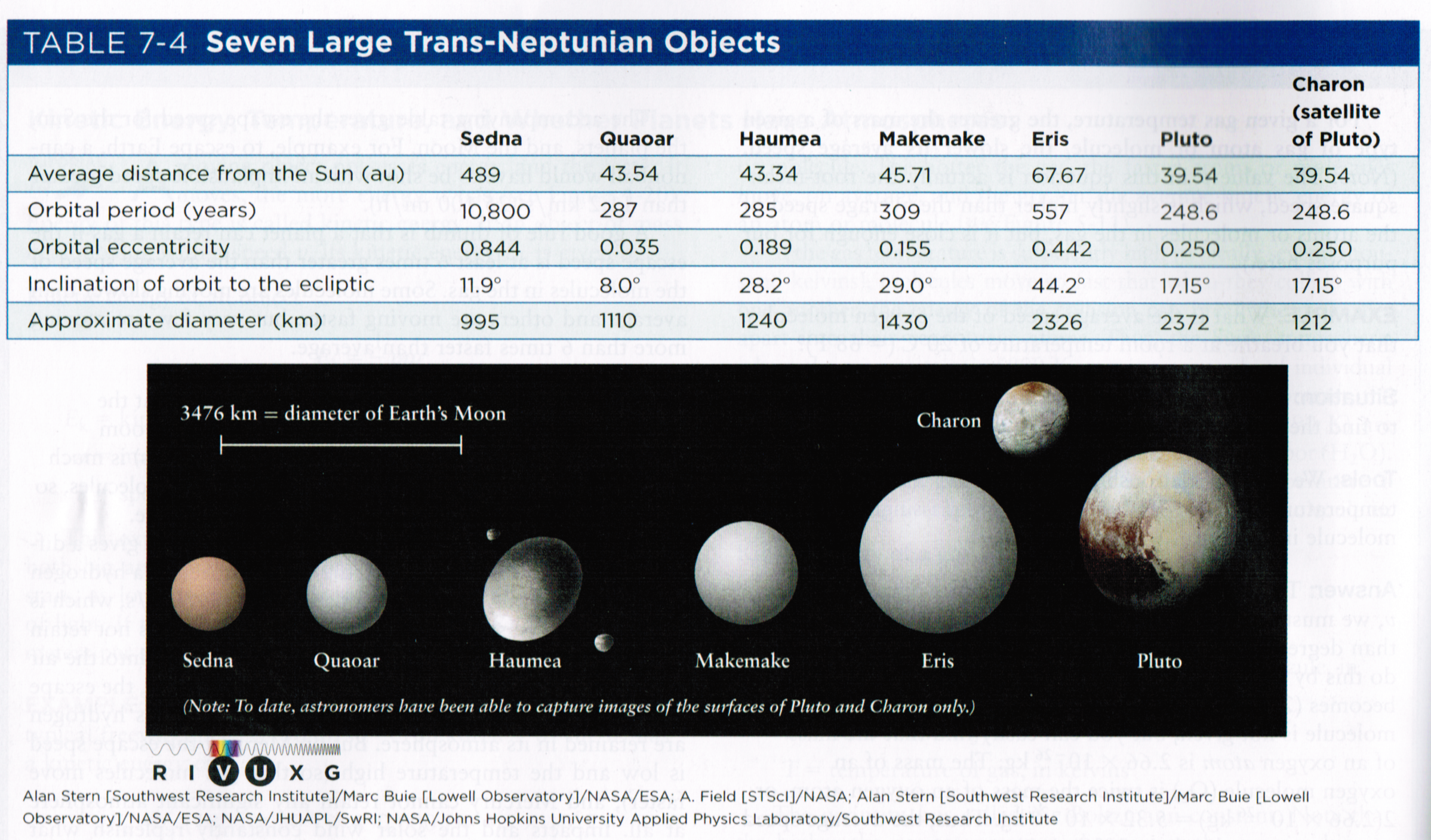
[The size of the 7 large TNOs. Note: The diameter of Eris is determined to be 2326 ∓12 km (Sicardy et al. 2011, Nature 478, 493) and that of Pluto is 2374 ∓8 km (Stern et al. 2015, Science 350, 249).]
[The orbit of Eris; q = 37.77 AU and Q = 97.56 AU.]
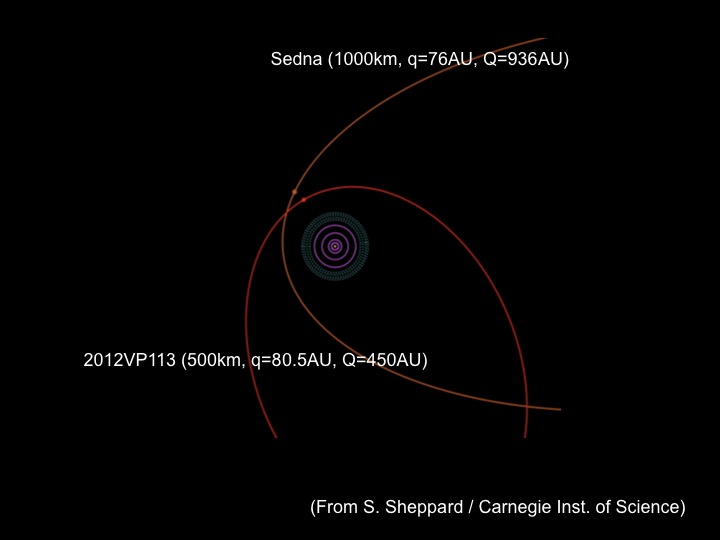
[The orbits of Sedna and 2012VP113, the two objects with largest known perihelion distance.]
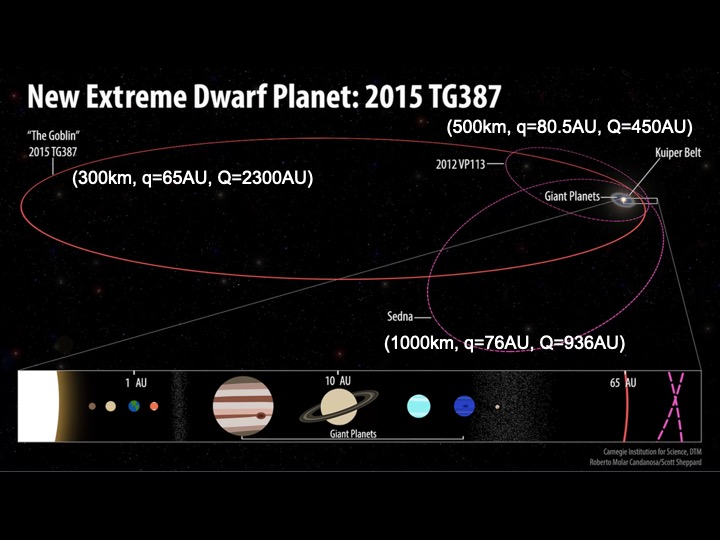
[A very-large-aphelion TNO, 2015 TG387.]
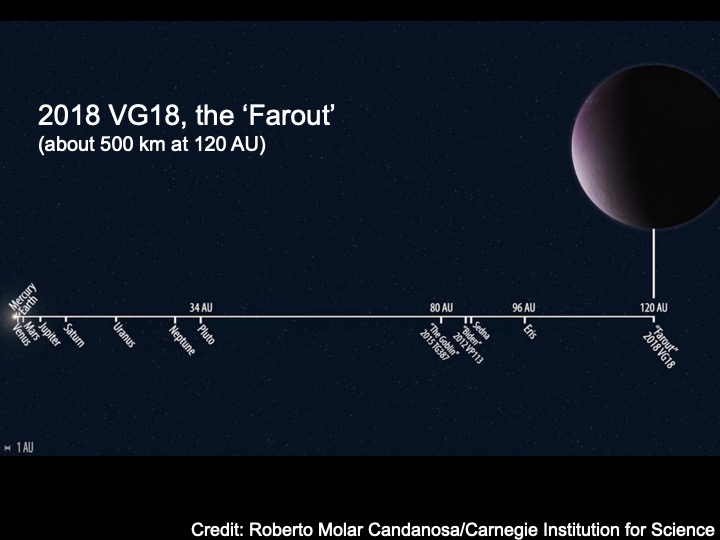
[A TNO found at 120 AU, with q = 21.7 AU and Q = 168.7 AU.]
[An imaginary view from Sedna.]
Binary TNOs have been found, making the Pluto-Charon system not alone, and small TNOs are believed to be even more abundant ...
To study small TNOs with the method of 'occultation':
[Object size and magnitude in the outer solar system. The upper dashed line is for an M5V (V=12) star and the lower for an O5V (V=12) star.]
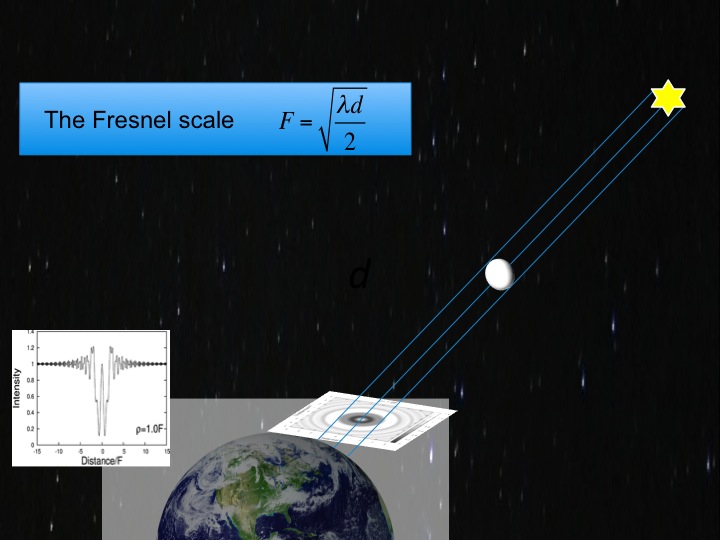
[Looking for shadows (serendipitous occultation search) to study population properties of small TNOs. See, e.g., Liu et al. 2015, MNRAS 446, 932; Chang et al. 2016, MNRAS 462, 1952.]
IAU Resolution: Definition of a 'Planet' in the Solar System
Contemporary observations are changing our understanding of planetary systems, and it is important that our nomenclature for objects reflect our current understanding. This applies, in particular, to the designation 'planets'. The word 'planet' originally described ˇ§wanderersˇ¨ that were known only as moving lights in the sky. Recent discoveries lead us to create a new definition, which we can make using currently available scientific information.
RESOLUTION 5A
The IAU therefore resolves that planets and other bodies in our Solar System, except satellites, be defined into three distinct categories in the following way:
(1) A 'planet' is a celestial body that (a) is in orbit around the Sun, (b) has sufficient mass for its self-gravity to overcome rigid body forces so that it assumes a hydrostatic equilibrium (nearly round) shape, and (c) has cleared the neighbourhood around its orbit.
(2) A 'dwarf planet' is a celestial body that (a) is in orbit around the Sun, (b) has sufficient mass for its self-gravity to overcome rigid body forces so that it assumes a hydrostatic equilibrium (nearly round) shape , (c) has not cleared the neighbourhood around its orbit, and (d) is not a satellite.
(3) All other objects , except satellites, orbiting the Sun shall be referred to collectively as 'Small Solar-System Bodies'.
